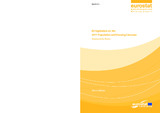| dc.contributor.author | Eurostat |
| dc.date.accessioned | 2024-02-16T11:22:19Z |
| dc.date.available | 2024-02-16T11:22:19Z |
| dc.date.issued | 2011 |
| dc.identifier.isbn | 978-92-79-19717-8 |
| dc.identifier.issn | 1977-0375 |
| dc.identifier.uri | https://ketlib.lib.unipi.gr/xmlui/handle/ket/4003 |
| dc.description | Theme: Population and social conditions |
| dc.description | doi:10.2785/12778 |
| dc.description | Cat. No KS-RA-11-006-EN-N |
| dc.description.abstract | Population censuses produce the most reliable and geographically detailed count of the population. They
report the benchmark figure for the ‘total population’ and cross-classify it in great detail for selected
characteristics. This makes censuses one of the richest sources of data on the regional distribution of
people living in a country and their most salient characteristics.
Censuses are cost-intensive. In principle, the data sources that form the basis for a census should contain
information on each individual statistical unit, e.g. on each person. Censuses entail comprehensive
administrative preparation by many public agencies like local, regional and national authorities, public
agencies that own relevant data sources and, of course, the statistical institutes. Moreover, census
methods and technology are constantly evolving in an interesting but sometimes arduous quest for the
best data quality in an environment that pushes for economies and a no-heavier-than-necessary burden on
respondents. In this context, the quality of census data is becoming ever more important and needs to be
monitored. |
| dc.format.extent | 128p. |
| dc.language.iso | en |
| dc.publisher | Publications Office of the European Union |
| dc.subject | EU legislation |
| dc.subject | Housing censuses |
| dc.subject | Output-oriented |
| dc.subject | Homeless |
| dc.subject | Data sources |
| dc.title | EU legislation on the 2011 Population and Housing Censuses |
| dc.type | Methodologies & Working papers |
| dc.publisher.place | Luxembourg |

